Quick Airline Information:
✈Airline IATA* code: FR
✈Airline ICAO* code: RYR ✈Founded: 28 November 1984 ✈Website: www.ryanair.com✈Alliance: None✈History
✈Operations and Destinations 🌍
✈Fleet ✈️
✈Photo Slide 📷✈Airline reviews ⭐
*IATA: (International Air Transport Association)
*ICAO: (International Civil Aviation Organization)
History Menu:
Since its establishment on the 28th November 1984, Ryanair has grown from a small airline, flying the short journey from Waterford to London Gatwick, into Europe's largest low cost carrier. Ryanair was founded as "Danren Enterprises by Christopher Ryan, Liam Lonergan (owner of Irish travel agent Club Travel), and Irish businessman Tony Ryan. The airline was shortly thereafter renamed "Ryanair. It began operations in 1985 flying a 15-seat Embraer Bandeirante turboprop aircraft between Waterford in Ireland and London Gatwick Airport.
.jpg)
In 1986, the company added a second route, flying Dublin to Luton, thus directly competing with the Aer Lingus/British Airways duopoly for the first time. With two routes and two planes, the fledgling airline carried 82,000 passengers in one year. These services were launched with two (46-seater) turbo prop BAE748 aircraft.
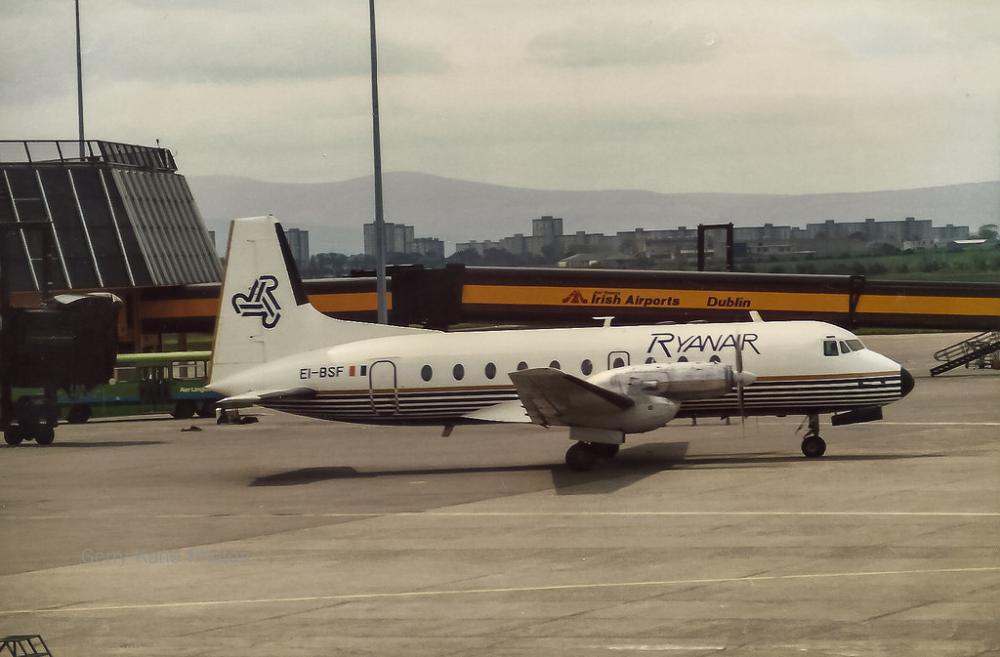
Later on In 1986, the directors of Ryanair took an 85% stake in London European Airways. From 1987, this provided a connection with the Luton Ryanair service onward to Amsterdam and Brussels. In 1987, Ryan hired Michael O'Leary as his personal financial and tax advisor. In 1988, London European operated as Ryanair Europe and later began to operate charter services.
Between 1987 and 1988 Ryanair acquires its first jet aircraft by leasing three BAC 1-11 aircraft from the Romanian state airline, Tarom as well as leasing new ATR-42 turbo-prop. The aircraft arrive on a full wet lease with Tarom providing all the pilots and engineers to enable Ryanair to operate the aircraft. With the arrival of these jet aircraft Ryanair increased its network with 15 scheduled routes from Dublin to Liverpool, Manchester, Glasgow and Cardiff, and opened up new routes from Luton to Cork, Shannon, Galway, Waterford and Knock in the West of Ireland.
.jpg)
The airline leased two more ATR42 turbo props in 1989 to retire older aircraft. Ryanair passenger numbers continued to increase, but the airline generally ran at a loss and, by 1991, was in need of restructuring. O´Leary was charged with the task of making the airline profitable. O'Leary quickly decided that the keys to profitability were low fares, quick turn-around times for aircraft, "no frills", no business class, and operating a single model of aircraft. O'Leary returned from a visit to U. S. Southwest Airlines convinced that Ryanair could make huge inroads into the European air market, at that time dominated by national carriers. He competed with the major airlines by providing a "no-frills", low-cost service.
In 1992, the European Union's deregulation of the air industry in Europe gave carriers from one EU country the right to operate scheduled services between other EU states and represented a major opportunity for Ryanair. So the airline launched services to Stockholm, Sandefjord Airport, Torp, Beauvais, Tillé and Charleroi near Brussels.
In December 1993 Ryanair announced a deal to buy a fleet of six Boeing 737-200 aircraft direct from Boeing and allow Ryanair to start replacing the old BAC1-11 jets. In November 1996 it reaches an agreement to buy 8 more Boeing 737-200s, which were previously operated by Lufthansa. It took delivery of the first of these in December, bringing the fleet to 12 Boeing 737s.
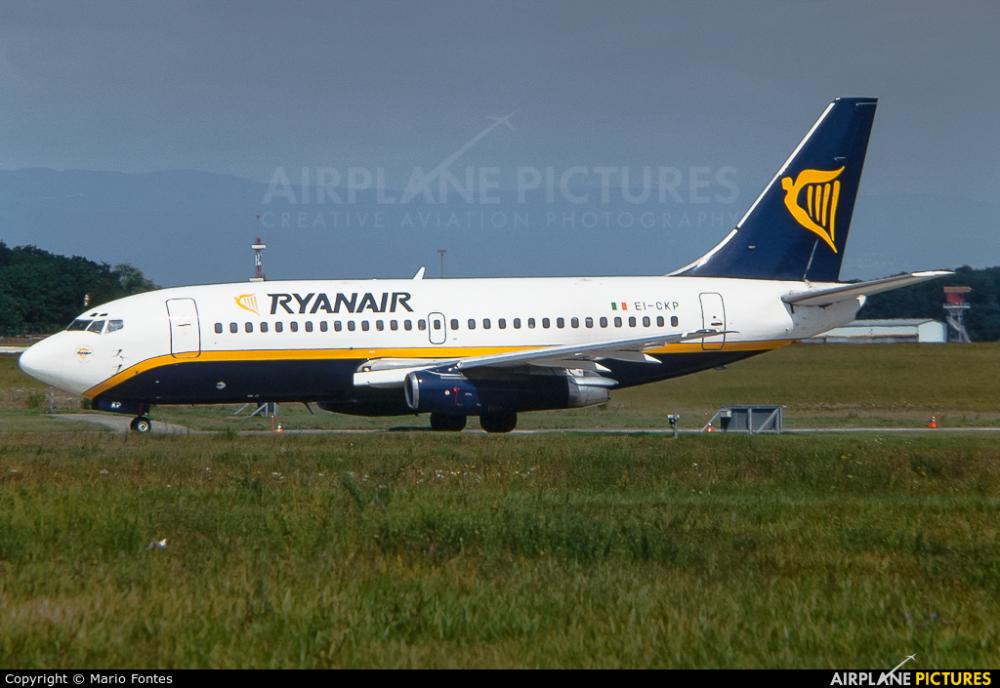
In 1998, flush with new capital, the airline placed a massive US$2 billion order for 45 new Boeing 737-800 series aircraft to replace the Boeing 737-200 classic aircraft that were being operated at the time. On 20th March 1999 Ryanair accepts delivery of its first new Boeing 737-800 series aircraft.
The airline launched its website in 2000, with online booking initially said to be a small and unimportant part of the software supporting the site. Increasingly the online booking contributed to the aim of cutting flight prices by selling directly to passengers and excluding the costs imposed by travel agents. Within a year, the website was handling three-quarters of all bookings.
Ryanair launched a new base of operation in Charleroi Airport in 2001. Later that year, the airline ordered 155 new 737-800. In April 2003, Ryanair acquired its ailing competitor Buzz from KLM.
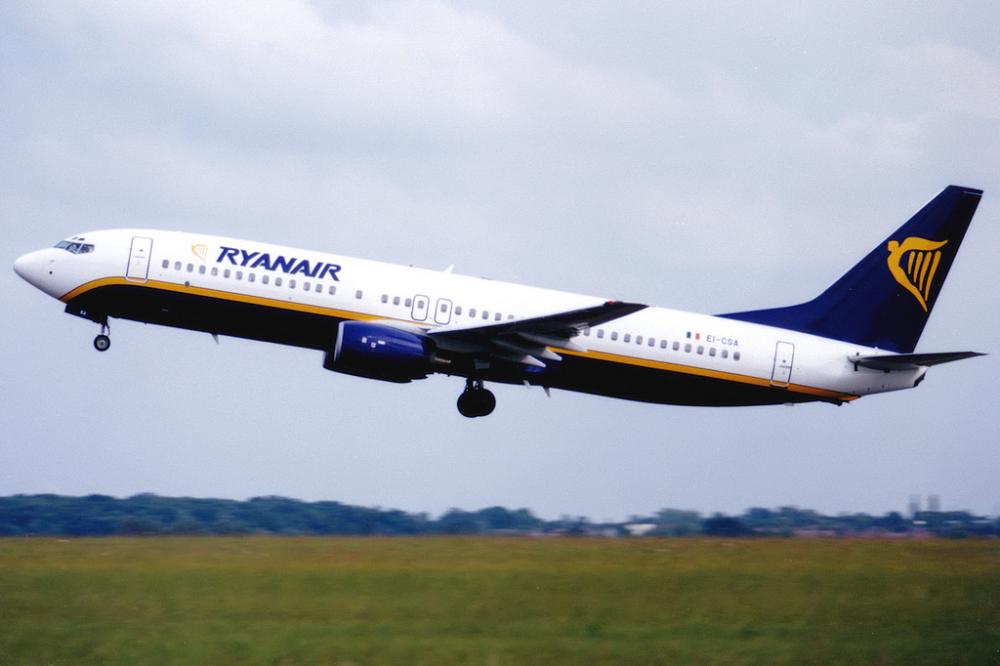
The enlargement of the European Union on 1 May 2004 opened the way to more new routes for Ryanair. The rapid addition of new routes and new bases has enabled growth in passenger numbers and made Ryanair among the largest carriers on European routes. It also took delivery of 14 more B737-800s and retired the first 7 of our 21 older B737-200s at the end of the year.
In August 2006, the company started charging passengers to check in at the airport, therefore reversing its policy of paying for online check-in. It says that by cutting airport check-in, it reduces overhead costs. By 2007,traffic grows by 20% to 51m passengers , it took delivery of 30 new aircraft to operate a fleet of 163 Boeing 737-800 Next Generation aircraft.
In October 2008, Ryanair withdrew operations from a base in Europe for the first time when it closed its base in Valencia, Spain due to the economical recession in Europe. On 1 December 2008, Ryanair launched a second takeover bid of Aer Lingus, however the Aer Lingus board rejected the offer.
On 21 February 2009, Ryanair confirmed they were planning to close all check-in desks by the start of 2010. Michael O'Leary, Ryanair's chief executive, said passengers will be able to leave their luggage at a bag drop, but everything else will be done online. This became reality in October 2009.
In April 2010, after a week of flight disruption in Europe caused by the 2010 eruptions of Eyjafjallajökull in Iceland, Ryanair decided to end refusals to comply with EU regulations which stated they were obliged to reimburse stranded passengers. In a company statement released on 22 April 2010, Ryanair described the regulations as 'unfair'.
In late 2010, Ryanair began withdrawing all their routes from their smallest base, Belfast City, and Shannon due to rises in airport fees.
Ryanair cut capacity by grounding 80 aircraft between November 2011 and April 2012 due to the high cost of fuel and continuing weak economic conditions.
On 19 June 2012, Ryanair Chief Executive Michael O'Leary announced his intentions to make an all-cash offer to buy Aer Lingus. However, the bid was blocked the European Commission in 2017, which had blocked an earlier 2007 bid. It also took delivery of a further 15 new aircraft bringing the fleet to 305 Boeing 737-800s.
On 25 October 2013, Ryanair unveiled what it called a series of "customer service improvements" over the next six months. These included lower fees for reprinting boarding passes, free changes of minor errors on bookings within 24 hours, and a second small carry on bag. Ryanair said it was making these changes due to customer feedback.
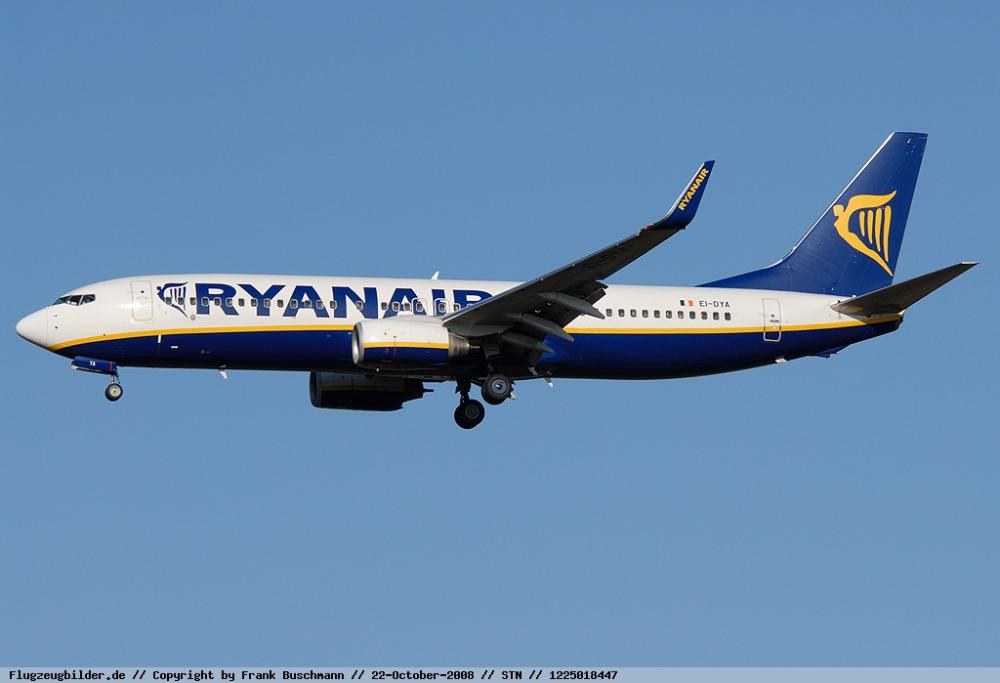
On 8 September 2014, Ryanair agreed to purchase up to 200 Boeing 737 MAX 8s (100 confirmed and 100 options) for over $22 billion. The airline confirmed plans to open an operating base at Milan Malpensa Airport from December 2015, initially with one aircraft.
In November 2016, Ryanair launched new package holiday service named Ryanair Holidays. The new service will offer flights, accommodation and transfer package deals.However in early February 2017, Ryanair suspended their Ryanair Holidays service, stating that one of their software providers breached contract conditions. It is thought Ryanair are currently looking for a new software provider to resume selling package holidays.
In April 2017, Ryanair started issuing tickets with connected flights, meaning in case of missed connection the customer will be re-booked without extra cost and compensated according to the EU Flight Compensation Regulation. To begin with, such tickets were issued only with connection at Rome-Fiumicino airport, but will be extended to more airports such as Milan, Porto and Madrid (with links to Air Europa's long haul network).
Plans are underway to add 50 new Boeing 737 Max-8 aircraft to Ryanair's fleet every year for the next five years in a strategy to reach 160 million passengers by the early 2020s, up from 120 million passengers in 2017.
History source: Wikipedia.org + Ryanair
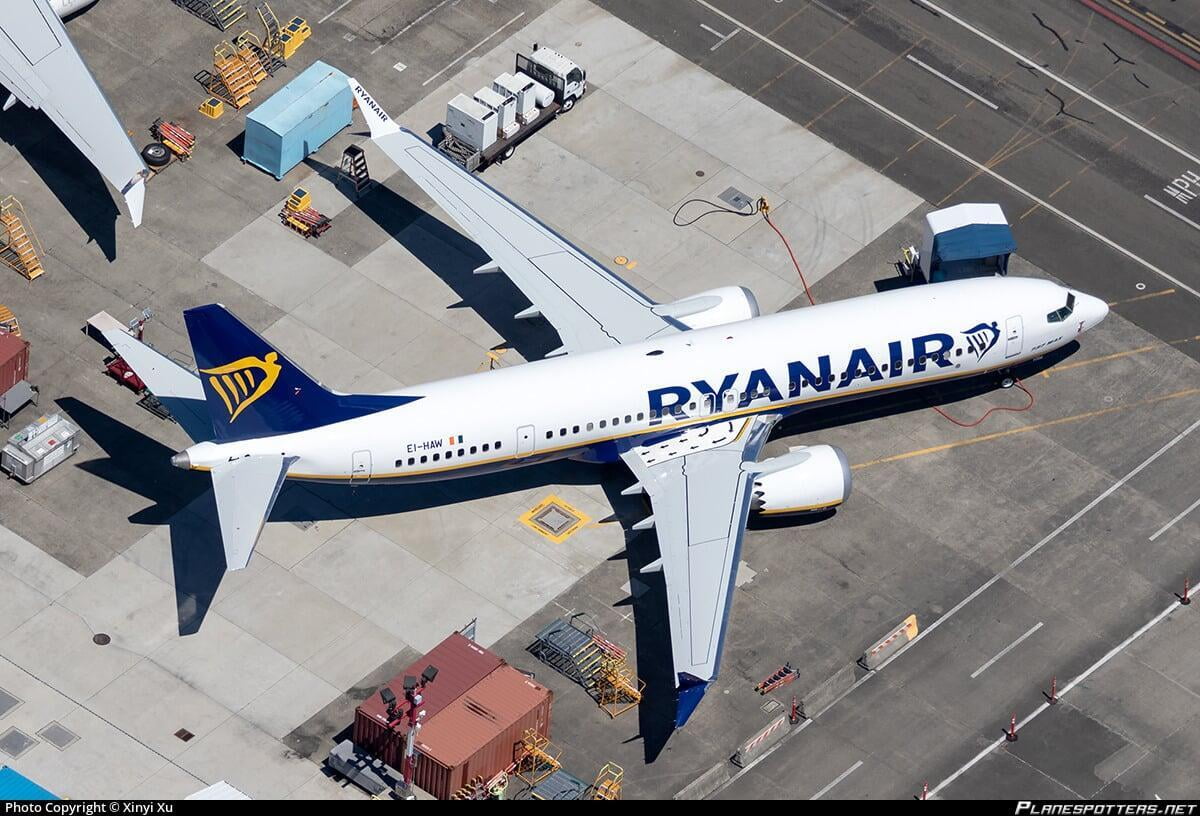
Operations and Destinations 🌍:
Ryanair concentrates most of its flights in Europe. The main bases are spread around Ireland, Germany, France, Spain and the UK, flying to the main and secondary Airports across all of continental Europe. The airline has much presence as well in Eastern Europe where it also has many bases and is in the process to open new ones. In total Ryanair has 84 bases in and out of Europe. It's a popular airline to fly with for budget conscious travellers and to see the distinctive Ryanair logo in most Europeans airports in no surprise now a days. Ryanair flies as far as to the Azores Islands, Morocco and The Canary Islands amongst many more within it's network or more than 200 destinations connecting 33 countries.
However with an aggressive route network of opening up new routes as soon as there is an opportunity, every season the destination lists change. As well, with market conditions being unfavorable, poor demand, political issues and airport taxes rising, Ryanair has also closed routes and bases in order to remain profitable and be a true competitor in its low cost market.
As for its way of flying, Ryanair has always been an airline to hit the headlines when it introduces new policies. Its policies on baggage keep changing to keep its fares low. Currently the airline offers only economy seating, with no option to recline the seats and all extra services are charged for. (baggage, seats, food & drink, priority boarding etc). As well, since mid 2018, passengers are only allowed to take one small personal item as cabin baggage and anything else must be paid for.
Below are the destinations* which are being served by Ryanair:
| Region 🗺️ | Destinations 🌍🌎🌏 |
|---|---|
| ✈Europe | A Coruña, Aalborg, Aarhus, Aberdeen, Alghero, Alicante, Almería, Amsterdam, Ancona, Athens, Baden-Baden, Banja, Luka, Barcelona, Bari, Basel, Belfast, Bergerac, Berlin, Béziers, Biarritz, Billund, Birmingham, Bologna, Bonn, Bordeaux, Bournemouth, Bratislava, Bremen, Brest, Brindisi, Bristol, Brive-la-Gaillarde, Brno, Bucharest, Budapest, Burgas, Bydgoszcz, Cagliari, Carcassonne, Cardiff, Castellón, Catania, Cephalonia, Chania, Clermont-Ferrand, Cologne, Comiso, Copenhagen, Corfu, Cork, Craiova, Crotone, Cuneo, Dalaman, Derry, Dinard, Dole, Dortmund, Dublin, Dusseldorf, Dusseldorf, East Midlands, Edinburgh, Eindhoven, Exeter, Faro, Figari, Frankfurt, Frankfurt-Hahn, Freiburg, Fuerteventura, Gdańsk, Genoa, Girona, Glasgow, Gothenburg, Graz, Grenoble, Halle, Hamburg, Hanover, Haugesund, Heraklion, Ibiza, Jerez de la Frontera, Kalamata, Karlsruhe, Katowice, Kaunas, Kerry, Kiev, Knock, Kos, Kraków, La Rochelle, Lamezia, Terme, Lanzarote, Lappeenranta, Larnaca, Las Palmas, Leeds / Bradford, Leipzig, Lille, Limoges, Lisbon, Liverpool, Łódź, London (STN, LTN, LGW, SEN) Lorient, Lourdes, Lublin, Luqa, Luxembourg City, Lviv, Lyon, Maastricht, Madrid, Málaga, Malmö, Manchester, Marseille, Memmingen, Menorca, Milan, Montpellier, Mulhouse, Munich, Münster, Murcia, Mykonos, Nantes, Naples, Newcastle upon Tyne, Newquay, Nice, Nîmes, Niš, Nuremberg, Olbia, Olsztyn, Oradea, Oslo, Ostrava, Paderborn, Palanga, Palermo, Palma de Mallorca, Paphos, Pardubice, Paris (BVA), Parma, Perpignan, Perugia, Pescara, Pisa, Plovdiv, Podgorica, Poitiers, Ponta Delgada, Porto, Poznań, Prague, Pula, Reus, Rhodes, Riga, Rijeka, Rimini, Rodez, Rome, Rzeszów, Saint-Malo, Santander, Santiago de Compostela, Santorini, Seville, Shannon, Sofia, Stockholm, Strasbourg, Stuttgart, Szczecin, Tallinn, Tampere, Tarbes, Tenerife Norte, Tenerife Sur, Terceira Island, Thessaloniki, Tillé, Timișoara, Toulouse, Tours, Trapani, Trieste, Turin, Valencia, Valladolid, Valletta, Varna, Växjö, Venice, Venice, Verona, Vigo, Vilnius, Vitoria-Gasteiz, Warsaw (WAW, WMI), Wrocław, Zadar, Zaragoza, Zurich. |
| ✈Outside Europe | Amman, Aqaba, Tel Aviv, Eilat, Agadir, Fez, Marrakesh, Nador, Oujda, Rabat, Tangier. |
*Destination list is for reference only. Please check directly with the airline for updates.
*Note some destinations are only seasonal.*Correct info as of Nov 2018.
Fleet ✈️:
Ryanair has always been concerned about keeping costs down, and in order to maintain this it has always standardised it's fleet around the same type of aircraft. Since the very beginning it's used the Boeing 737. Being loyal to it's improvements it now operates Europe's largest B737-800 fleet with over 450 aircraft in operation with new build planes arriving every year to replace older planes or open up new routes. It has the new series B737 Max 8 on order with deliveries which started in 2019; however with the grounding of the type till a future date their planes are now grounded awaiting re-certification of the type.
The airline operates the following fleet:
| Network🌐 | Aircraft ✈️ |
|---|---|
| ✈All it's flights | Boeing 737-800 (Boeing 737 Max-8 on hold). |
*Correct fleet info as of April 2020.
Ryanair Photo Slide 📷:
Reviews ⭐:
 |  |
|---|---|
| ✅ Recently introduced connecting flight strategy. (selected destinations only) | 👎Basic fares only allow one personal small item as hand luggage. (Carry on hand-luggage must be paid for) |
| ✅ The airline offers the best prices and fares when bought in advance. | 👎 Food and drink for purchase only. Even water! |
| ✅ Point to point service, offers direct routes within Europe where other airlines only fly via a connection. | 👎 Heavy penalties for excess baggage and rebooking. |
| ✅ Less crowded airports, as it flies to secondary cities, it's often easier to get to your ultimate destination and saving time. | 👎No free seat selection. Random free seat assigned for free. Group bookings are split "at random" when allocating free seats. |
| ✅Good punctuality record. | 👎Seats can not be reclined, space pitch is narrow. |
| 👎 Charges for boarding passes issued at the airport. (Free for home printing or mobile) | |
| 👎 Service is quick but informal | |
| 👎 Planes are cleaned by the cabin crew, instead of a cleaning team, meaning that often seats can be found not totally clean from stains, crumbs or spills. | |
| 👎Some cabin crew only speak one language with a poor English level or understanding. | |
| 👎Often can be surprised with hard landings. |





.png)